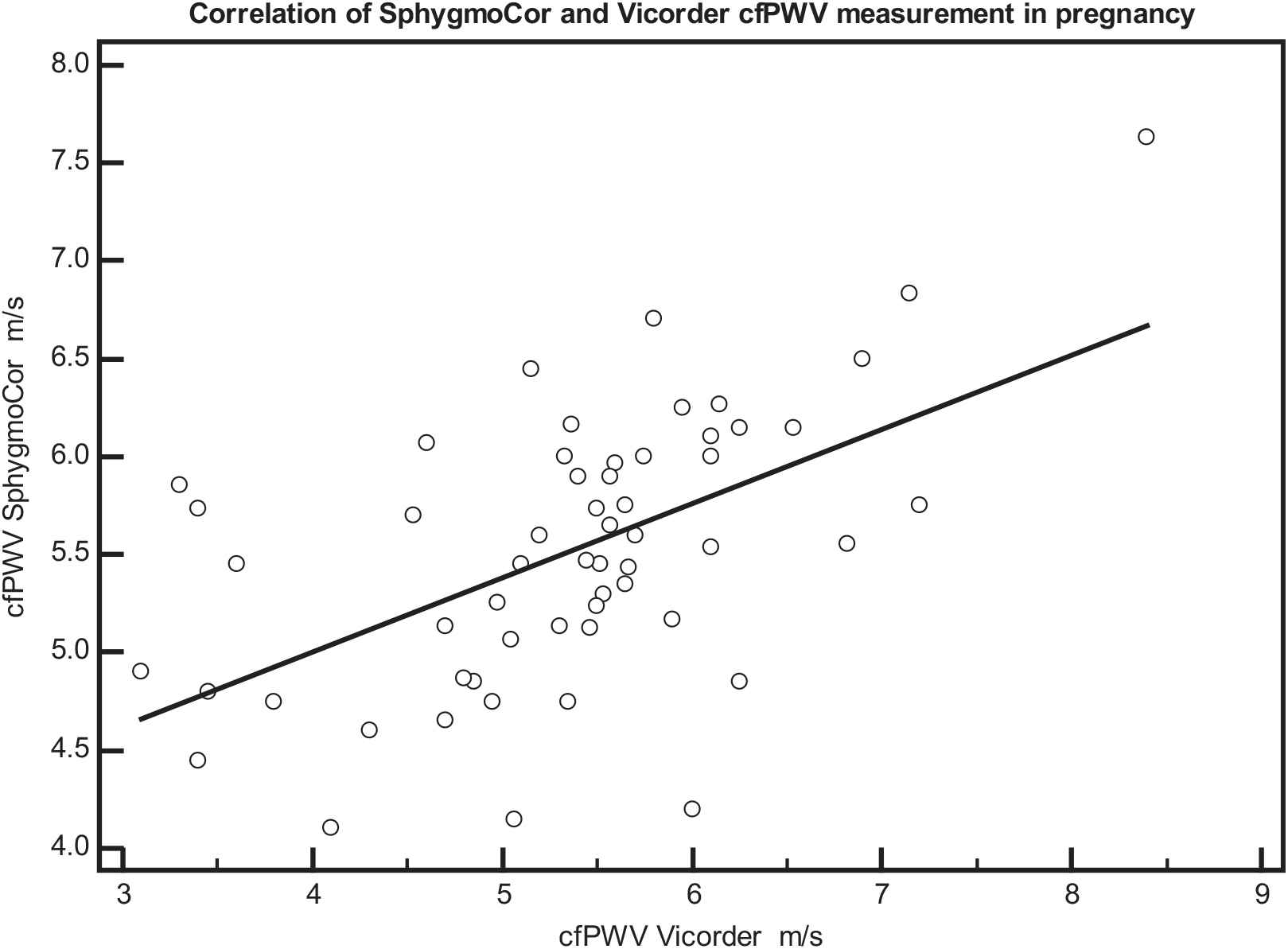P6.10 COMPARISON OF SPHYGMOCOR AND VICORDER DEVICES FOR CAROTID-FEMORAL PWV MEASUREMENT IN THE SECOND TRIMESTER OF PREGNANCY
- DOI
- 10.1016/j.artres.2011.10.095How to use a DOI?
- Open Access
- This is an open access article distributed under the CC BY-NC license.
Objectives: Carotid-femoral pulse wave velocity (cfPWV) is considered the gold standard measurement for assessment of aortic stiffness. cfPWV is increased in women at risk of developing, and those with, preeclampsia. We aimed to compare measurements obtained by SphygmoCor and Vicorder devices that use ECG/tonometry and compression techniques, respectively.
Methods: 57 consecutive women were recruited from the high risk obstetric ultrasound clinic. Smokers were excluded. Age:19–42yrs (Mean: 32.6yrs), Gestation: 24+0–30+6 (Mean: 26+6 weeks). Women were rested supine for 10 minutes in 30° left lateral position. SphygmoCor readings were performed first followed, within 5 minutes, by Vicorder readings. Left side femoral and carotid were used for all readings. All readings were performed three times and a mean value calculated. In order to avoid false prolongation of path length, calipers were used to measure distances.
Results: Mean SphygmoCor cfPWV: 5.51m/s (95%CI:5.32–5.70m/s). Mean Vicorder PWV: 5.34m/s (95%CI:5.06–5.61m/s). There was significant inter-device correlation (r=0.56, P<0.0001) (Fig.1). Bland-Altman analysis showed a mean difference of 0.17m/s (95% limits of agreement: −1.52 to 1.86m/s) (Fig.2)
Conclusions: In the second trimester of pregnancy, both devices produce similar readings and the mean difference is unlikely to be of clinical significance. SphygmoCor measurements require a skilled operator, application of ECG leads and palpation of the femoral pulse. The Vicorder device requires less skill and is less intrusive to the subject. These are important considerations for regular use in a clinical setting. Notably the cfPWV in our study is lower than the general population and agreement at <4.5m/s appears unreliable.

r=0.56, P=0.0001

Cite this article
TY - JOUR AU - T.R. Everett AU - A. Mahendru AU - C.M. McEniery AU - C.C. Lees AU - I.B. Wilkinson PY - 2011 DA - 2011/11/29 TI - P6.10 COMPARISON OF SPHYGMOCOR AND VICORDER DEVICES FOR CAROTID-FEMORAL PWV MEASUREMENT IN THE SECOND TRIMESTER OF PREGNANCY JO - Artery Research SP - 173 EP - 174 VL - 5 IS - 4 SN - 1876-4401 UR - https://doi.org/10.1016/j.artres.2011.10.095 DO - 10.1016/j.artres.2011.10.095 ID - Everett2011 ER -
